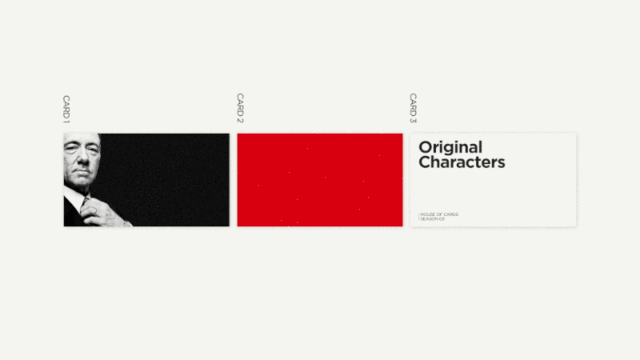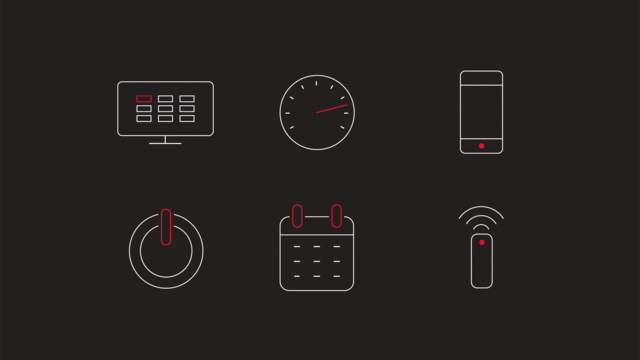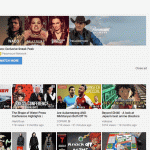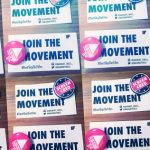Netflix’s New brand
After knocking down the logo, Netflix has adopted a common branding language that can scale from giant billboards to tiny iPhone apps.
October 29, 2015
When Netflix’s inside design staff quietly unveiled a brand new, flat brand closing yr, at least one critic made a stink. What used to be Netflix if not a shout of extrusions and redness?
Now, we know.
The creative studio Gretel has published the fruits of a 12 months-lengthy collaboration with Netflix, building the company a complete new model identity able to running on a global scale.

“the enormous problem was once unifying everything. They’re truly a hit, obviously, but the model itself was once a little bit fractured as a result of they have been working with companions and companies around the phrase,” explains Gretel inventive Director Ryan Moore. “that they had the brand and some common text tips, however as a result of the sheer growth, they couldn’t oversee digital, print, trailers, and social media. What they wanted was an idea to sew everything together—a conceptual manner—however surely a visual device all these companies might have a look at and adapt to any format they needed to.”

Any random photograph dressmaker who lands a Netflix job wants with the intention to easily create on-brand visuals, and so what the Gretel group developed was once a easy, versatile card machine referred to as “the Stack.” In any model manifestation of Netflix, there are three core cards that you simply’ll see: the primary is a photograph or video of a “personality” (like Kevin Spacey’s Frank Underwood), the second is a splash of colour (typically white or purple), and the 1/3 is textual content of some sort (like a movie title or tagline). In combination, the three stacks become the Netflix model.
it works. now not handiest is the stack equally recognizable at various scales and mediums—whether it appears on a banner advert or the facet of a constructing, or whether it happens to be still or in motion—the stack has some other helpful function. Its three layers don’t want to exist as equals. Their intensity is tweakable depending on an ad’s context.

“We known as it model extent. [The brand] could be grew to become up or down,” Moore says. as a result of in some contexts, the characters themselves may in truth talk fine for your entire Netflix brand, while in others, all of Netflix’s unique content material could be unrecognizable. “For a billboard of Orange Is the brand new Black in the U.S., it might need a refined trace of Netflix branding. but when it’s launching in Germany, you might need more extent to stamp wit with Netflix appear and feel.”
alternatively, the longer you have a look at the stack in movement, the extra it feels find it irresistible was constructed, no longer only for advert-based totally branding, however to operate as consumer interface on iPhones and Xboxes. Its cards—that are treated with actual weight and shadow—have pointers of Google’s contemporary method to UX at the core.
That feel is via design, as Gretel built the language to scale into Netflix’s interactive merchandise, too. “i know the lack of UI is a development. You’re seeing it on the Xbox—gestures and voice command—and my iPhone can ask Siri anything else. part of our design problem wasn’t about stripping away the UI expertise, but enhancing one thing about Netflix’s core position as a provider, as service that may rally effectively guess what I might like and serve up content material from a reputedly never-ending catalog.”
on this regard, Gretel doesn’t make any firm difference between branding a company and branding a company’s product and even UX. It’s all a continuum.
“that is something we discuss loads internally, the idea of conduct,” says Gretel executive inventive Director Greg Hahn. “in reality it interprets throughout all elements of branding: Language habits. sort behavior. movement conduct. We’re seeking to create issues that can talk and have signature behaviors throughout any medium.”
“The hope is that [Netflix] will start trickling this into the UI at some point, however we don’t recognize at this level to what extent,” he provides later. “It’s a for much longer lead time for UI implementation than for the remainder of advertising.”
[by the use of brand New]
[All images: via Gretel]
fast company , read Full Story
(79)














